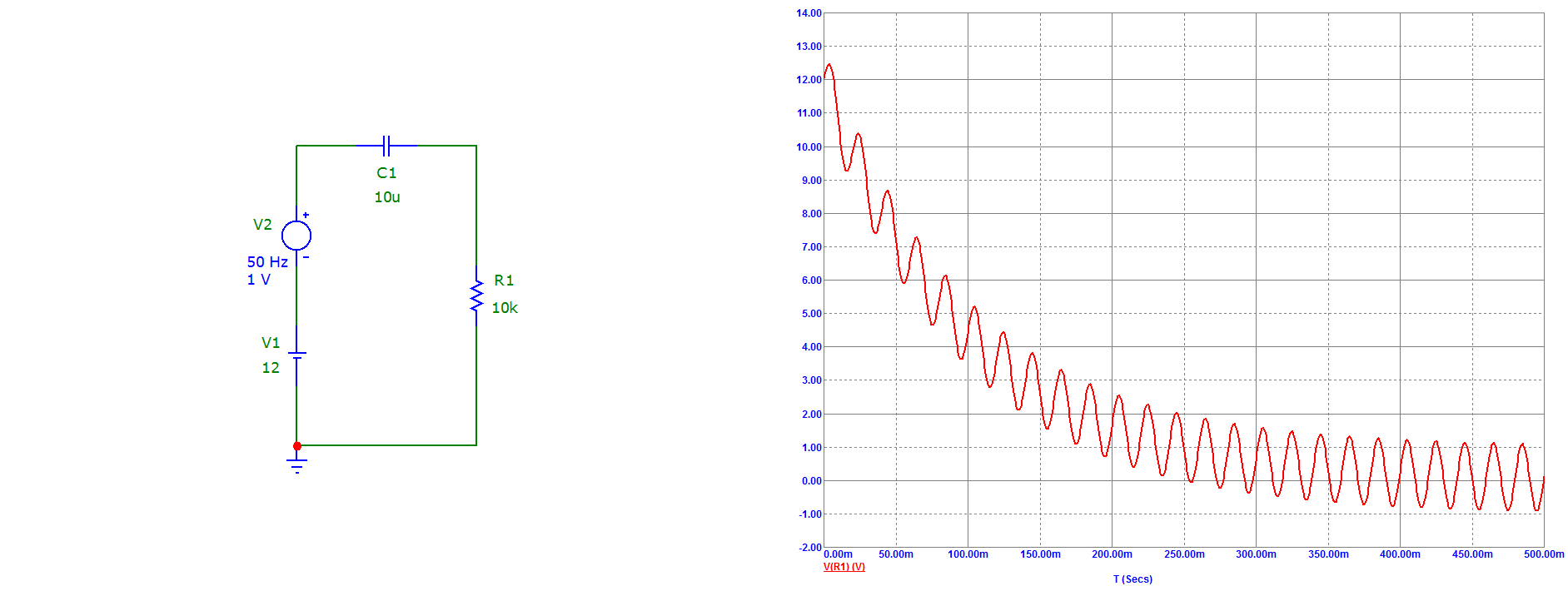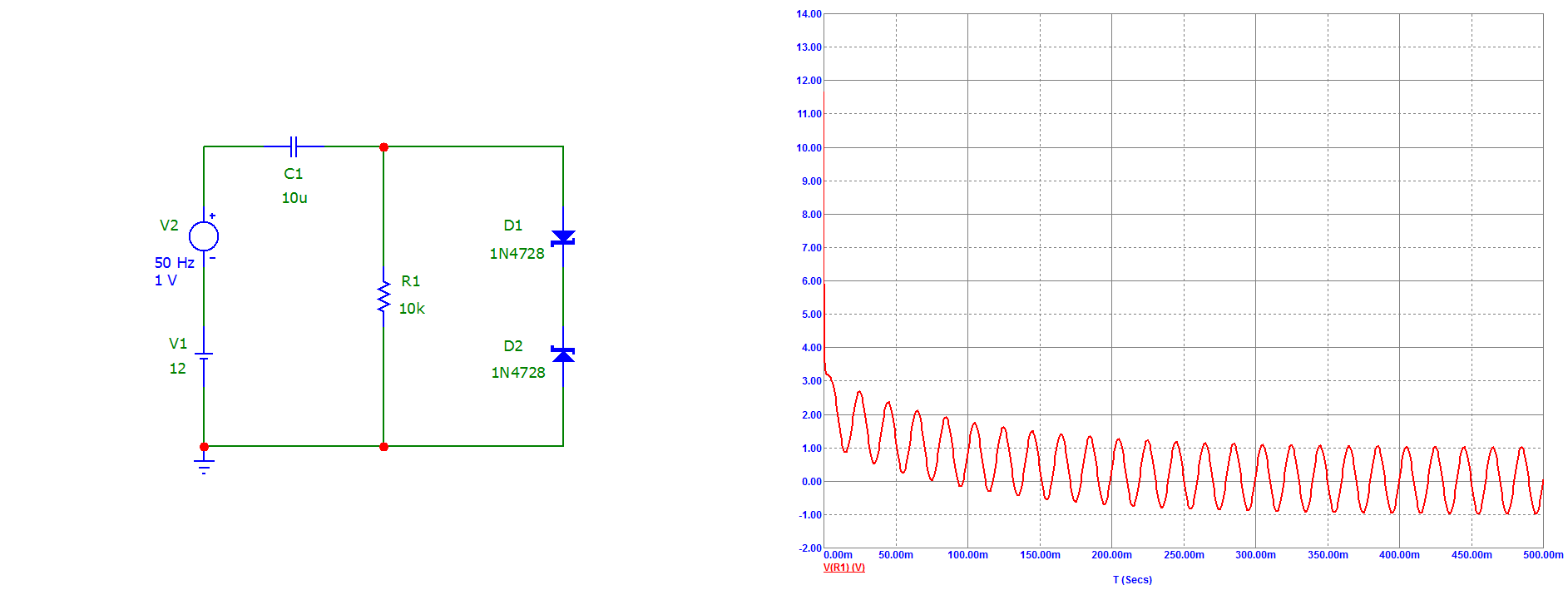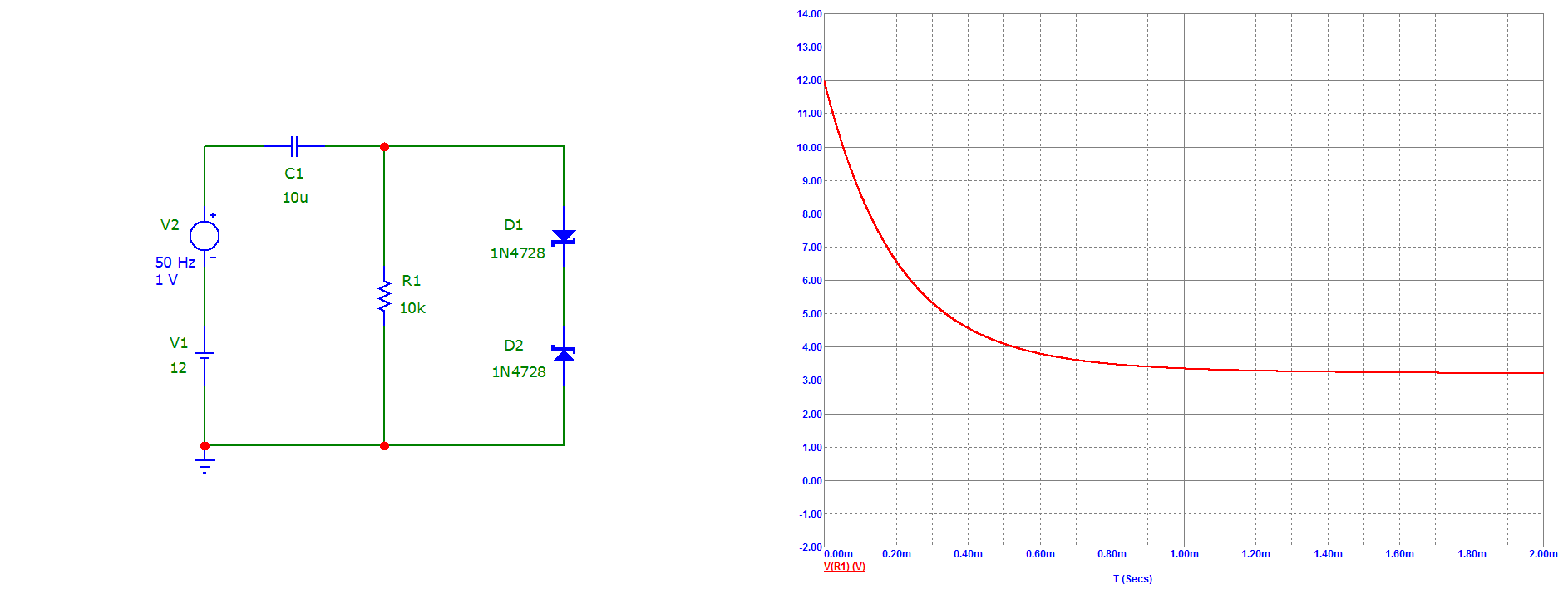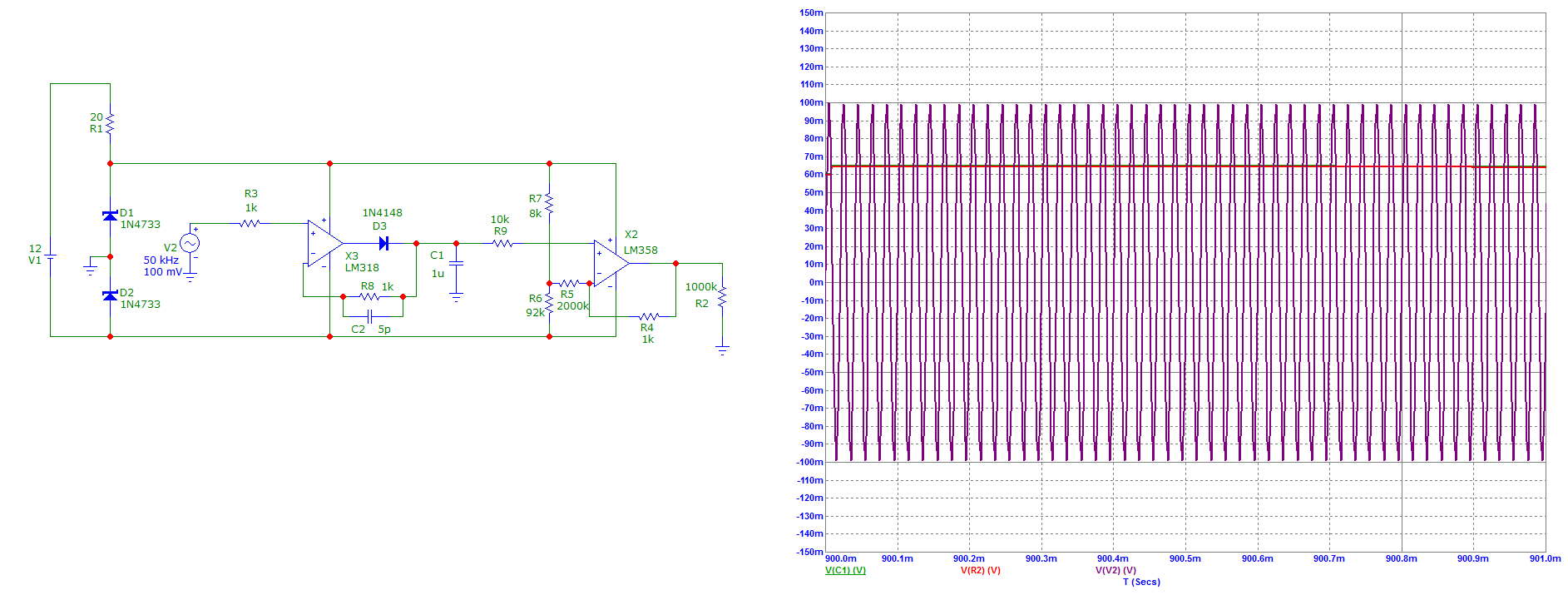Thomas Anderson
New Member
I have this test circuit, which has this signal:

V1 may change from 1 to 30 V, V2 may change from 0 to 4 V peak to peak.
I need to clip the signal at about 3 - 4 V to feed it to an Op Amp, which has a split supply voltage of about -5 and +5 V.
So I added two zener diodes and the signal was clipped:

But it was not fast enough, for about 300 microseconds the signal was still above 5 V - the Op Amp power supply voltage, which, I figure, may damage the Op Amp:

How can I clip the voltage faster, without distorting the signal that is below 3 - 4 volts?

V1 may change from 1 to 30 V, V2 may change from 0 to 4 V peak to peak.
I need to clip the signal at about 3 - 4 V to feed it to an Op Amp, which has a split supply voltage of about -5 and +5 V.
So I added two zener diodes and the signal was clipped:

But it was not fast enough, for about 300 microseconds the signal was still above 5 V - the Op Amp power supply voltage, which, I figure, may damage the Op Amp:

How can I clip the voltage faster, without distorting the signal that is below 3 - 4 volts?


